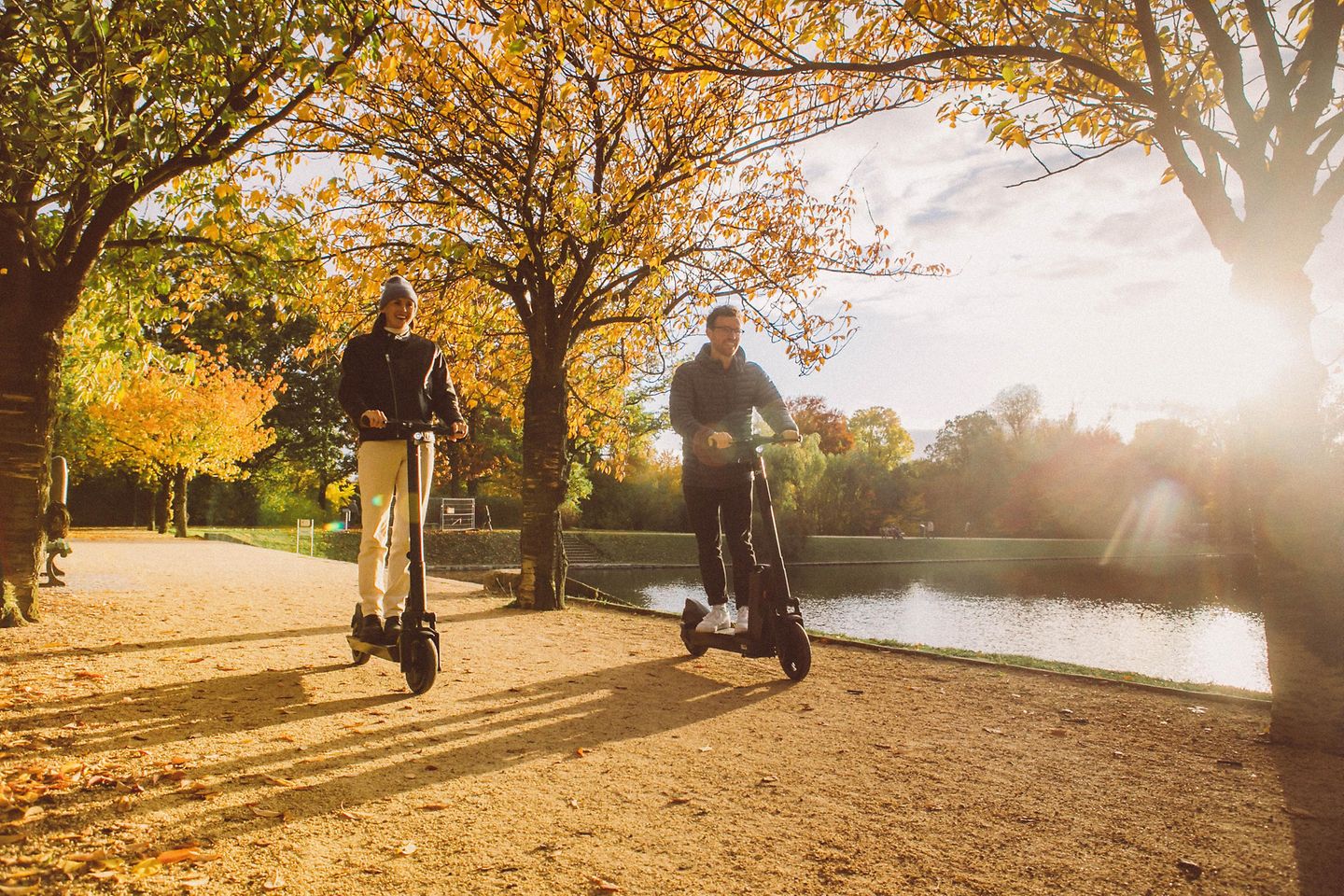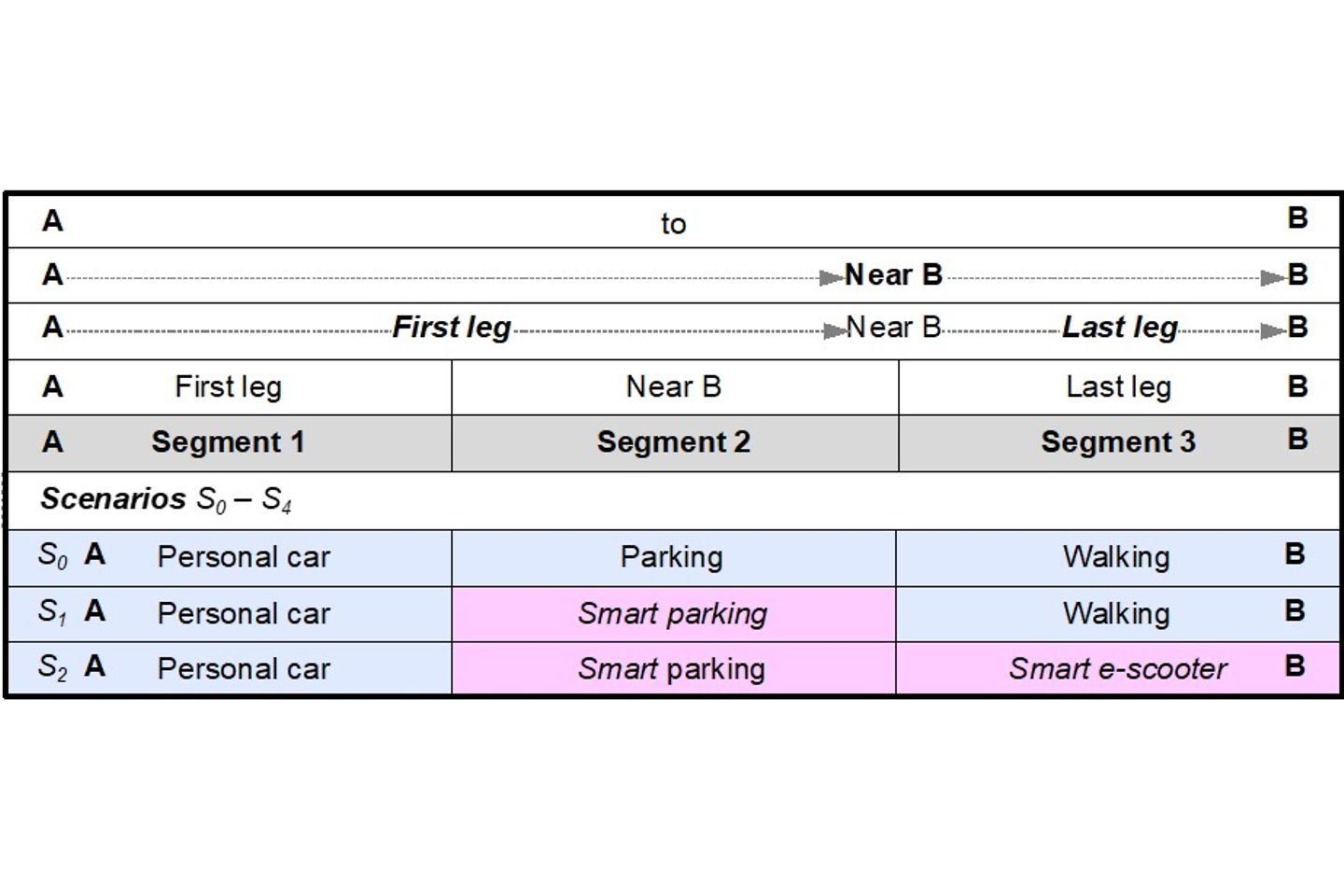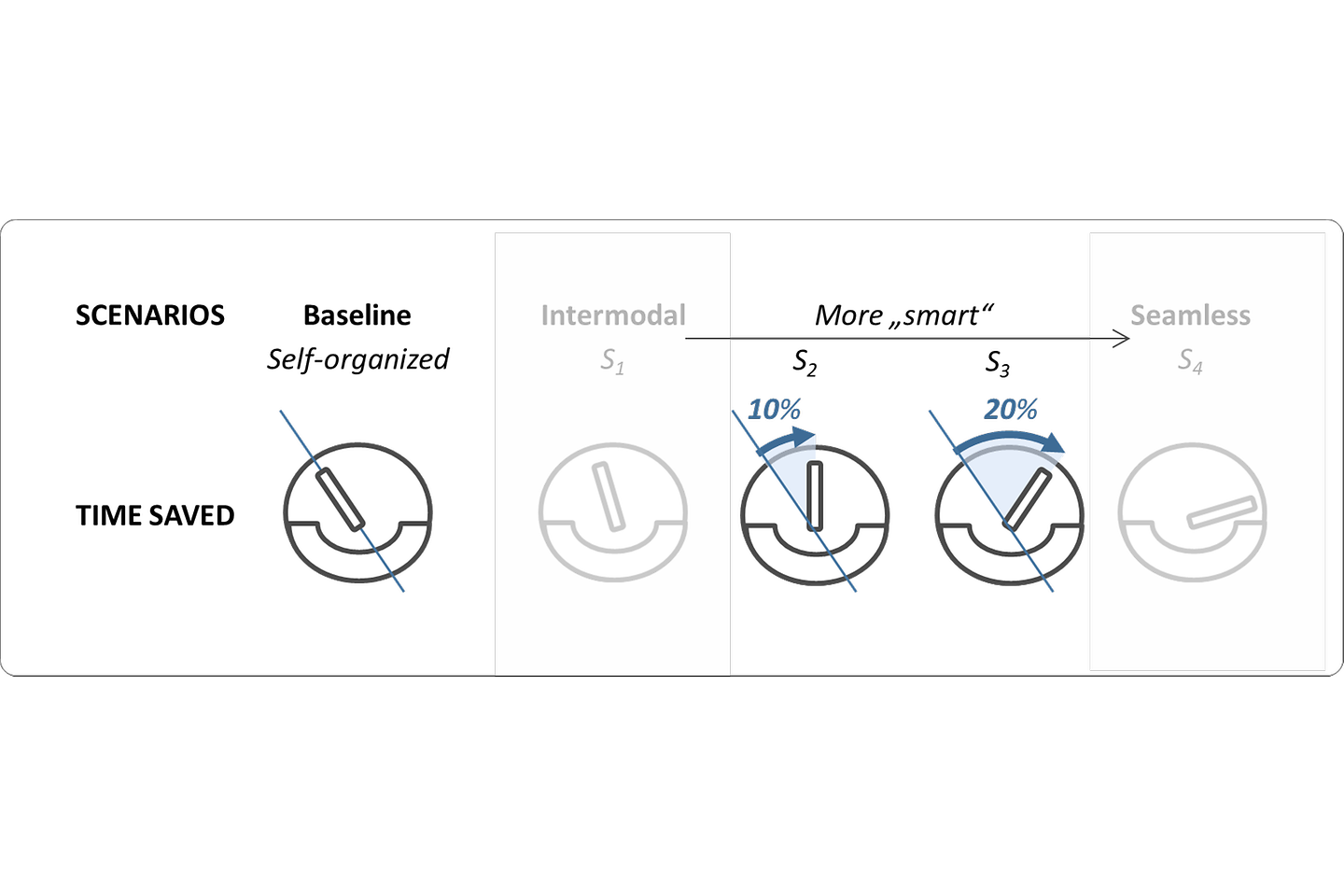
How can we reach our destination in traffic-plagued cities comfortably but with less environmental impact? Intermodal travel, the linking of different modes of transportation for seamless door-to-door connectivity, is not yet a reality in Germany, despite many new transportation options. Telekom's mobility analytics experts are investigating the reasons for this with the help of simulation tests in our Berlin digital twin and in the RealLab in Hamburg.

On the one hand, many major cities are experiencing gridlock, with more frequent and longer traffic jams (TomTom Traffic Index Ranking 2019), and citizens are complaining about air pollution and noise pollution (we have published a detailed analysis in “Stuck in traffic”). On the other hand, digitalization is constantly giving rise to new technologies that open up new travel options. The widespread use of smartphones and apps (mobile maps, turn-by-turn navigation, smartphone payments) has enabled ride-hailing, carpooling, and car-sharing services (such as Uber, Free Now, and Lyft). And better batteries have driven innovation in two-wheelers like e-bikes and e-scooters – in Germany, laws even had to be changed (eKFV 2019). Smartphone-based mobility platforms with a multimodal or Mobility-as-a-Service (MaaS) offering have already emerged in some major cities, such as Jelbi from Berlin's public transport company and Switch from Hamburger Hochbahn. And the streetscape there has become more colorful on account of e-scooters – such as those from Bird (black), Lime (white), Tier (green), and Voi (red) – and rental bikes from providers such as Donkey Republic (orange) and Next (silver). Yet despite this vast array of new transportation options for the last leg to the destination (micromobility), no intermodal service offering has emerged to date. And that raises the question: why not? At first glance, the new micromobility should make public transport services, which are tied to rigid routes and schedules, more flexible and thus more attractive. So what are we waiting for? One answer would be that the e-scooters are exciting for the geek and tech enthusiasts but ultimately do not result in any practical benefit for the end user.

Figure 1: A simple intermodal model and “smart” scenarios
The benefit for the end customer is the conditio sine qua non, an indispensable prerequisite for any economically feasible offer. Without benefits for the end customer, everything else is a waste of time. So let's take a closer look at this point. How? How can the benefits of intermodal mobility be estimated if they don’t yet exist? How can the impossible be implemented to prove the probable? Our approach is two-pronged, with theory and practice: we rely on (theoretical) simulation experiments for initial indications, and we (in practice) build a demonstrator with real transport carriers and data providers.
Simulation is a valued scientific tool (e.g. Schlueter Langdon 2005) which has evolved in the field of economics from the foundations laid by Nobel Laureates Simon (1996) and Smith (1962). There are also already various tools for mobility, for example SUMO (Simulation of Urban Mobility), an open-source traffic simulation by the German Aerospace Center (DLR 2020, Krajzewicz et al 2012), and the software VMC by the Fraunhofer Institute for Industrial Mathematics ITWM (Fraunhofer ITWM 2020). These comprehensive, powerful tools enable extremely detailed analysis. For our purpose of obtaining a rough estimate of end-user benefits, a very simplified model and procedure was designed coupled with a scientifically accurate implementation and experimental strategy (see, e.g., Schlueter Langdon 2014; for a detailed description, see “Intermodal Mobility”). This model was tested once with average values for Germany as a whole and then specifically for Berlin, our Berlin digital twin. We did this because averages are problematic in travel, as variables can be very unevenly distributed. Thus, travel distance and time vary greatly depending on the means of transportation. For all of Germany and all modes of travel (from walking to driving) the average trip length, for example, is 12.5 km, while the median, the middle point, is only 3.8 km (Follmer & Gruschwitz 2019). This is why we moved away from average values with the Berlin digital twin. Instead, we dealt with extreme conditions such as morning rush hour and specifically selected the main traffic arteries of Berlin. Because, if an intermodal service works there at those times, it will work anywhere, anytime.

Figure 2: Time advantages in intermodal travel using the example of Berlin
The results of our simulation speak for themselves: intermodal travel is faster (for a detailed description, see “Berlin digital twin: Yes, intermodal traffic is faster!”). The experiments show that the time savings can quickly exceed 10% and can even be twice as high for "smart" linking such as recommending a parking space with an e-scooter connection (see scenario S2 in Figure 1, Smart Parking with Smart E-Scooter) (see Figure 2). This result goes far beyond noise; it cannot be a random deviation. Values above 10% are a clear indication that real improvements can be made. Especially since we ran the model in a very specific context – in Berlin. The name “Berlin digital twin” is no coincidence, as the simulation is based on values that correspond to reality in Berlin – so it is more of a real experiment than a simulation. In other words, you would get similar results if you actually conducted the experiment in the streets of Berlin (so grab your stopwatch and go...).
What are we waiting for? Okay, consumer benefits are only the first requirement for success. And here, too, only the time gain was taken into account. It is the most important factor but only one decision-making variable for the customer. Customers also consider cost and convenience, or more accurately, the right combination of these factors. And because of climate change, environmental protection must also be taken into account. The other important prerequisite for the emergence of an offer is that companies must understand to what extent and in what way consumer benefits can be monetized. This second requirement for success is directly related to the role of data. “Smart” only works with data. Let's take Uber as an example: the assignment of a passenger to a driver depends on data, namely the locations of passenger and driver, availability, and traffic conditions, etc. – each with the same timestamp. Without this data, Uber could not orchestrate a transportation service. For “Uberization”, all parties – passengers and drivers – must share data in near real time. The same applies to intermodal mobility: data sharing is the key. The problem is obvious: some transportation options are in direct competition with each other (public transport, taxis, e-scooters, etc.). Therefore, some service providers are competitors and do not trust each other. Everyone wants to “own” the customer or customer connection and keep the customer data to themselves. In addition, data protection regulations such as the GDPR can serve as an excuse for not disclosing important data. The remedy could be found in technology that is not based on trust between the parties involved. It would be enough for the parties to trust a mutually profitable data transaction.
This is where our work on the IDS standard comes in. IDS is a DIN-SPEC standard for data exchange while maintaining data sovereignty (Otto et al. 2019 and IDSA blog). Or, to put it in my own words: IDS allows parties who do not trust each other to trust a particular data transaction. And this is exactly what the RealLab in Hamburg is about – determining whether an IDS-based solution is possible. Among other things, the simulation helped show that there are real, quantifiable benefits for end customers, i.e. on the demand side. The RealLab can now be used to investigate how a corresponding service can be orchestrated for end customers on the supply side with the IDS. To this end, Telekom is building a working demonstrator with the Telekom Data Intelligence Hub (DIH) team and together with the Urban Software Institute for presentation with the RealLab in Hamburg at the 2021 ITS World Congress. Since the IDS technology for the European GAIA-X Hypercloud is already being used here, a first mini GAIA-X Mobility Data Space is also being created.
Follmer, R., and D. Gruschwitz. 2019. Mobility in Germany, short report. Edition 4.0 of the study by Infas, DLR, IVT and Infas 360 on behalf the Federal Ministry of Transport and Digital Infrastructure (BMVI) (FE no. 70.904/15). Bonn, Berlin.
Krajzewicz D., J. Erdmann, M. Behrisch, and L. Bieker. 2012. Recent Development and Applications of SUMO – Simulation of Urban Mobility. International Journal on Advances in Systems and Measurements 5 (3&4): 128-138
Schlueter Langdon, C. 2005. Agent-based Modeling for Simulation of Complex Business Systems: Research Design and Validation Strategies. International Journal of Intelligent Information Technologies 1(3) (July-September): 1-11
Schlueter Langdon, C. 2014. 3-Step Analytics Success with Parsimonious Models. In: Wang, J. (ed.). Encyclopedia of Business Analytics and Optimization. Idea Group Publishing: Hershey, PA; London: 1-13
Otto, B., D. Lis, J. Juerjens, J. Cirullies, S. Opriel, F. Howar, S. Meister, M. Spiekermann, H. Pettenpohl, and F. Möller. 2019a. Data Ecosystems: Conceptual Foundations, Constituents and Recommendations for Action. Fraunhofer ISST Report, ISSN 0943-1624 (October), Dortmund